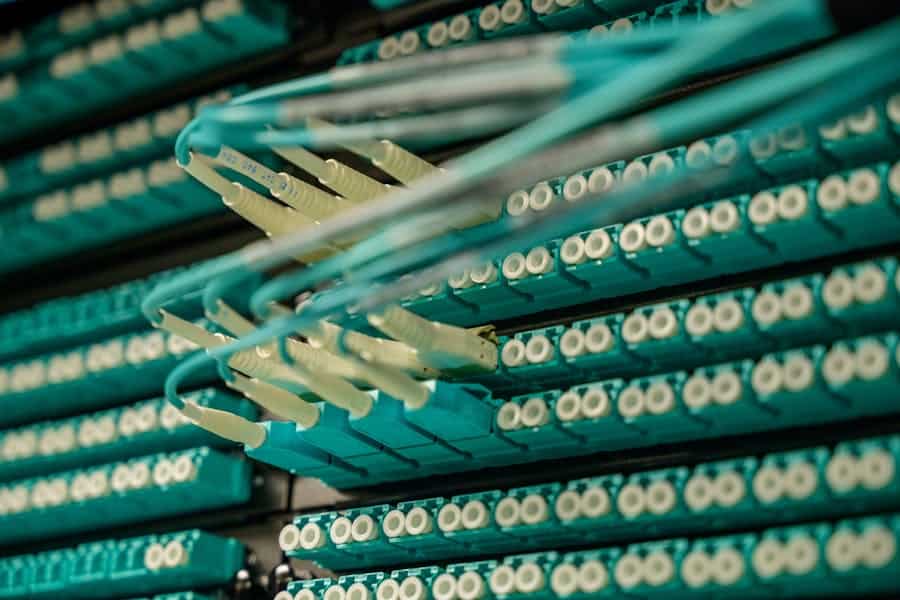To close the digital divide gap, implementing affordable broadband internet service and digital literacy training is essential. In today’s technology-driven world, access to the internet and digital skills are crucial for economic and educational opportunities.
Without adequate connectivity and knowledge, individuals risk falling behind in various aspects of life. This gap disproportionately affects disadvantaged communities, hindering their ability to access resources and opportunities available online. By prioritizing initiatives that promote affordable connectivity and digital education, we can work towards bridging the digital divide and creating a more inclusive and equitable society.
Investing in infrastructure, public-private partnerships, and tailored solutions can help ensure that everyone has equal access to the digital world.
Understanding The Digital Divide
The digital divide refers to the gap between those who have access to technology and those who do not. This gap encompasses access to the internet, digital devices, and the skills necessary to use them effectively. Understanding the digital divide is essential to address the disparities it creates in various communities and to develop effective solutions to bridge this gap.
Defining The Digital Divide
The digital divide is the discrepancy in access to and proficiency with technology. It encompasses disparities in internet access, availability of digital devices, and the ability to use technology effectively. This divide affects individuals, communities, and countries, perpetuating inequalities in education, employment, and access to essential services.
Impact On Different Communities
The digital divide impacts various communities, including low-income households, rural areas, elderly individuals, and marginalized groups. These communities often lack access to high-speed internet, affordable devices, and digital literacy resources, placing them at a significant disadvantage socially and economically. Addressing these disparities is crucial to ensure equal opportunities for all.
Challenges In Closing The Digital Divide
In addressing the digital divide, several challenges need to be overcome to ensure equitable access to technology and internet resources for all individuals. The following sections highlight significant hurdles that contribute to the persistent gap in digital inclusion.
Access Barriers
One of the primary challenges in closing the digital divide is the presence of access barriers, which include inadequate broadband infrastructure and limited availability of internet services in remote or underserved areas. These barriers hinder individuals from accessing online resources and participating in the digital economy.
Socioeconomic Factors
Socioeconomic factors play a crucial role in perpetuating the digital divide. Low-income households often struggle to afford internet services and necessary digital devices, further widening the gap in digital access. Educational institutions and public libraries may also lack the resources to provide equal opportunities for all individuals to benefit from digital technologies.
Strategies For Bridging The Divide
To bridge the digital divide gap, several strategies can be implemented. These include improving internet connectivity, enhancing digital literacy, ensuring affordable and equitable access to technology, investing in digital education, and developing stronger broadband infrastructure. By addressing these areas, we can work towards closing the digital divide and providing equal opportunities for all.
Increasing Connectivity
One of the key strategies for bridging the digital divide is to increase connectivity. It is essential to ensure that individuals and communities have access to affordable and robust broadband internet service. To achieve this, there is a need for investment in the development of stronger broadband infrastructure. This would enhance internet connectivity and make it more accessible to everyone.
Moreover, it is important to work towards providing internet-enabled devices that cater to the needs of users. This includes ensuring the availability of affordable devices that are suitable for various purposes such as education, communication, and job seeking. By addressing the issue of connectivity and providing the necessary tools, we can significantly reduce the digital divide gap.
Promoting Digital Literacy
Another essential strategy for bridging the digital divide is promoting digital literacy. It is crucial to provide individuals with the necessary knowledge and skills to effectively navigate the digital world. This can be achieved through comprehensive digital literacy training programs.
Digital literacy training should focus on equipping individuals with the skills needed to utilize technology, access online resources, and effectively communicate and collaborate through digital platforms. By ensuring that everyone has the opportunity to develop these skills, we can empower individuals and bridge the digital divide gap.
In addition, it is important to provide quality technical support to individuals and communities. This includes offering assistance in troubleshooting technical issues that may arise, ensuring that individuals have access to reliable support when needed.
To summarize, strategies for bridging the digital divide include increasing connectivity through investment in broadband infrastructure and providing affordable devices, as well as promoting digital literacy through comprehensive training programs and quality technical support. By implementing these strategies, we can work towards closing the digital divide gap and ensuring equal opportunities for all.
Policy And Local Solutions
Implementing Digital Inclusion Policies
In order to close the digital divide gap, implementing digital inclusion policies is crucial. This involves creating and enforcing regulations that ensure affordable internet access, availability of devices, digital literacy training, and technical support.
Developing Locally Appropriate Solutions
Another vital aspect is developing locally appropriate solutions that cater to the specific needs of each community. This could involve public-private partnerships, community initiatives, and tailored approaches to address connectivity issues and enhance digital skills.
Business And Economic Impact
In today’s digital age, the digital divide presents a significant challenge, especially when considering its implications on the business and economic landscape. As technology continues to revolutionize industries, the disparity in access to digital resources and skills can lead to substantial repercussions for both individuals and the economy as a whole.
Effects On Education And Employment
The digital divide directly influences access to educational resources and employment opportunities. Without adequate digital infrastructure, individuals, particularly in underserved communities, are disadvantaged in accessing online educational materials and job opportunities, widening the educational and employment gaps.
Economic Benefits Of Closing The Divide
Closing the digital divide can yield various economic advantages, including fostering a more skilled and adaptable workforce, stimulating innovation and entrepreneurship, and improving overall productivity. By ensuring equitable access to digital resources, the economy stands to benefit from a more inclusive and competitive marketplace, ultimately driving economic growth and sustainability.

Credit: joeducation.eu
Role Of Technology And Infrastructure
In today’s digital age, the role of technology and infrastructure is pivotal in bridging the digital divide gap. Addressing the importance of broadband infrastructure and exploring innovative technological solutions are essential steps towards ensuring equitable access to digital resources.
Importance Of Broadband Infrastructure
Broadband infrastructure plays a crucial role in closing the digital divide gap by providing high-speed internet access to underserved communities. Reliable broadband not only facilitates seamless connectivity but also enables individuals to access educational resources, remote work opportunities, and essential services. Governments and telecommunication companies need to invest in expanding broadband infrastructure to rural and low-income areas, ensuring that no one is left behind in the digital era.
Innovative Technological Solutions
Embracing innovative technological solutions such as satellite internet, mesh networks, and 5G technology can further contribute to narrowing the digital gap. These advancements offer alternative means of connectivity, especially in remote regions where traditional infrastructure deployment may be challenging. Moreover, initiatives focusing on digital literacy and skills training are essential to empower individuals in utilizing technology for personal and professional growth.
Frequently Asked Questions For What Do You Think Could Be Done To Close The Digital Divide Gap?
How Can We Close The Digital Divide Gap?
Closing the digital divide gap can be achieved by implementing digital inclusion policies, programs, and tools that focus on affordable broadband internet service, access to internet-enabled devices, digital literacy training, and quality technical support. Additionally, investing in digital education and developing stronger broadband infrastructure are important steps in bridging the gap.
By taking a shared approach and coordinating locally appropriate solutions, we can effectively reduce the digital divide.
What Can Be Done To Solve The Digital Divide?
To solve the digital divide, implement digital inclusion policies with affordable internet service, user-friendly devices, digital literacy training, and quality technical support.
Why Do We Need To Close The Digital Divide?
Closing the digital divide is essential to ensure equal access to technology, education, and opportunities. It helps marginalized individuals and communities overcome socioeconomic disadvantages and gain crucial digital skills for education and employment. By providing connectivity and digital literacy training, we can bridge the gap and create a more inclusive society.
What Do You Think Can Be Done To Bridge The Digital Divide?
To bridge the digital divide, we need increased connectivity, better digital literacy, and affordable access. Investing in digital education and developing stronger broadband infrastructure are also crucial. Implementing digital inclusion policies and programs, including affordable internet service and digital literacy training, is essential.
Coordinate locally appropriate solutions to overcome local barriers.
How Can The Digital Divide Gap Be Closed?
The digital divide gap can be closed by implementing policies and programs that promote affordable broadband, access to devices, digital literacy training, and quality technical support.
Conclusion
Closing the digital divide requires implementing policies for affordable access, digital literacy, and quality support. Bridging this gap benefits marginalized communities by providing essential tools for education and career advancement. Coordinated efforts at local levels are crucial to effectively address this global challenge and ensure digital inclusion for all.












































Leave a Reply